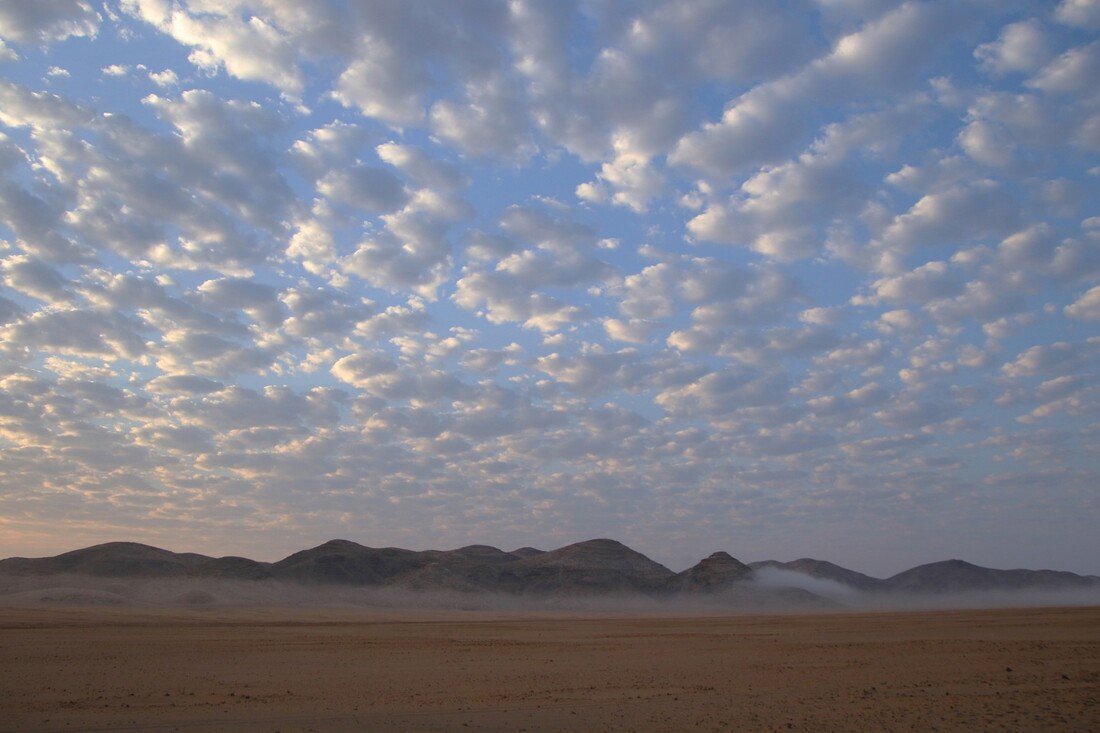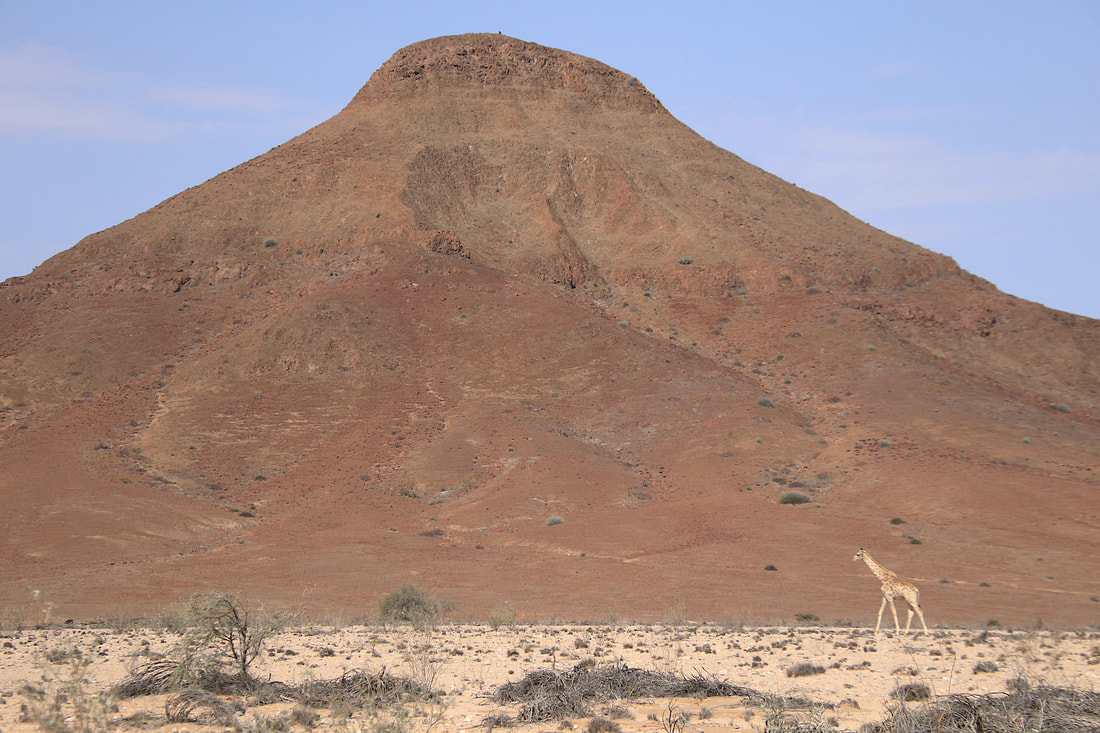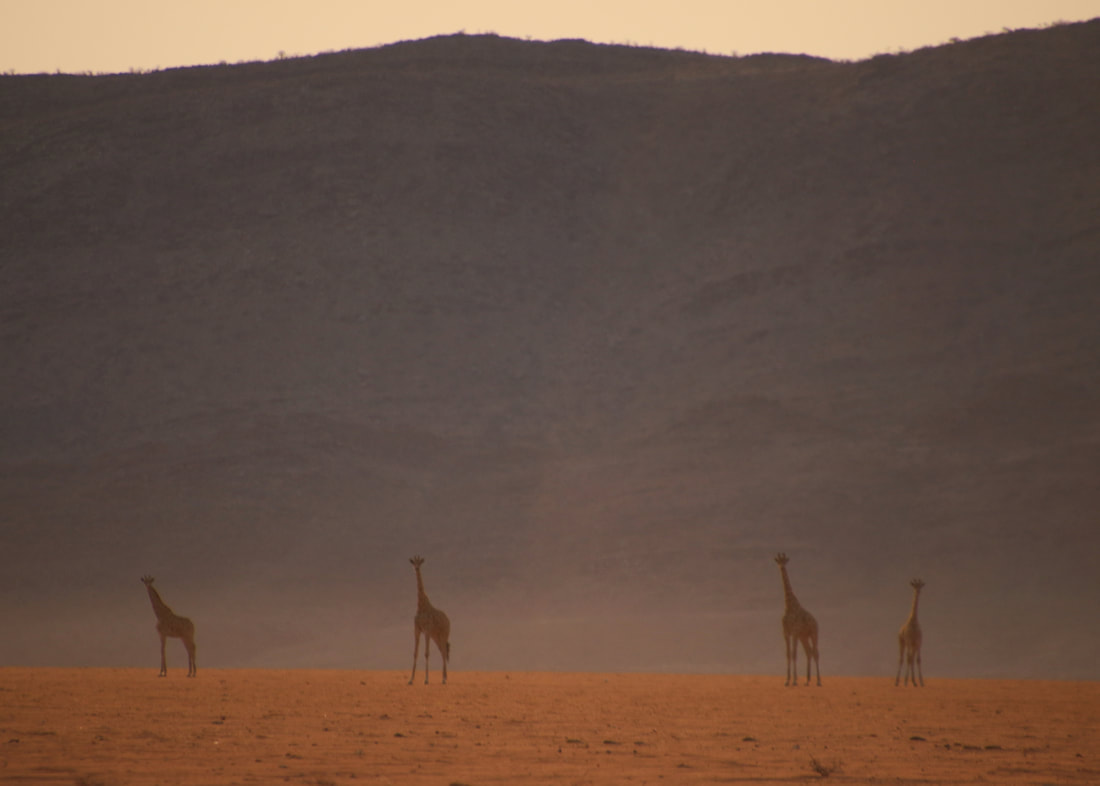|
In the hyper-arid deserts of western Namibia, rainfall is an infrequent luxury. Fog represents the most reliable source of water and many of the ecosystem’s plants and animals have evolved ways to subsist on moisture from the air. As weather patterns become less predictable under different climate change scenarios, it remains uncertain how these specialized organisms can adapt to these changing conditions. Life on the edge is challenging and changing the rules of the game can have dramatic consequences for the area's inhabitants.
Check out the link below for some reading on the fog dependent wildlife of the Namib: https://esajournals.onlinelibrary.wiley.com/doi/full/10.1002/ecs2.2996 As and aside, the bottom of this image also features the delightfully mysterious fairy circles of the desert. If you're up for a good time on a Friday night, you should read about them too...
0 Comments
The Hoanib River Catchment embodied much of what I imagined Northwest Namibia to be: rugged, remote, and harsh. I was unprepared, however, for how stunningly beautiful it was. The early morning and evening light hit the canyon walls and mountain sides at oblique angles, painting the texture of the rocks with new shadows and colors, constantly changing the scenery. This evolving landscape supported an amazing diversity of wildlife and a relative abundance of giraffe.
We have been studying the movement ecology of giraffe in this area, and in the lower Hoanib, we encountered a few of the individuals sporting GPS units. These are the same giraffe that I have been monitoring from afar for the past 2 years and it was a privilege to finally share space with them and experience the rivers that support these desert wanders. Beyond analyzing remotely sensed data, an understanding of these beings requires more intimate perspective, and offered a valuable glimpse into how these giraffe navigate these arid environments We first caught glimpse of the Haurosib River as we drove back inland from the barren Skeleton Coast. Descending into the river plain from the surrounding mountains, I was immediately struck by the wide and productive desert riparian zones. An oasis of greenery in an otherwise rusty and tawny landscape, this river system held relatively large numbers of giraffe and other animals tucked amongst the Salvadora persica and Acacia tress. We camped in one such area along the sandy riverbed and set up our tents in the shadow of a large bull giraffe.
The largest town in this area is Puros, which is an eclectic smattering of houses and trading posts on the flat desert along the banks of the ephemeral Huarsib river. In Puros, the river bed meanders across an open plain, but just upstream, it emerges from impressive canyons tucked in forbidding mountains, before branching and disappearing into similar mountains just downstream. Here, water is life but it is elusive, snaking its way in and out of impassable canyons, leaving just enough open area, woody vegetation, and water beneath the earth's surface to sustain the areas' wildlife and people, tucked amongst the dunes. The diversity of environments that giraffe inhabit is not only apparent at the continental scale, but also at the intrapopulation level. I recently returned from a couple weeks in Northwest Namibia where I worked with colleagues to survey giraffe in three different ephemeral river systems that primarily drain into the Skeleton Coast. These tree-lined sandy depressions create arteries of vegetation through an otherwise barren landscape, sustaining life between the infrequent rains. Despite being separated by only a few kilometers - and some formidable mountains - each river system, and the surrounding areas had remarkably different ecological rhythms.
Our surveys began in the areas surrounding the hyper arid Khumib River Catchment, one of the drier and northerly river systems in western Namibia. From the crimson sands of the Marble plains to the barren expanses of the Ensengo and Gomatum, these Martian landscapes provided otherworldly backdrops for giraffe. Perhaps more impressive was the number the thriving Himba communities along these desiccated waterways. I have spent most of the last decade studying giraffe and other megaherbivores in the savannahs of east Africa, so these first few days of surveys in Northwest Namibia gave me a much more visceral appreciation the resilience of these incredible animals and their ability to thrive in some of the harshest landscapes I've experienced. |
AuthorMichael Brown Archives
December 2022
Categories |




 RSS Feed
RSS Feed
